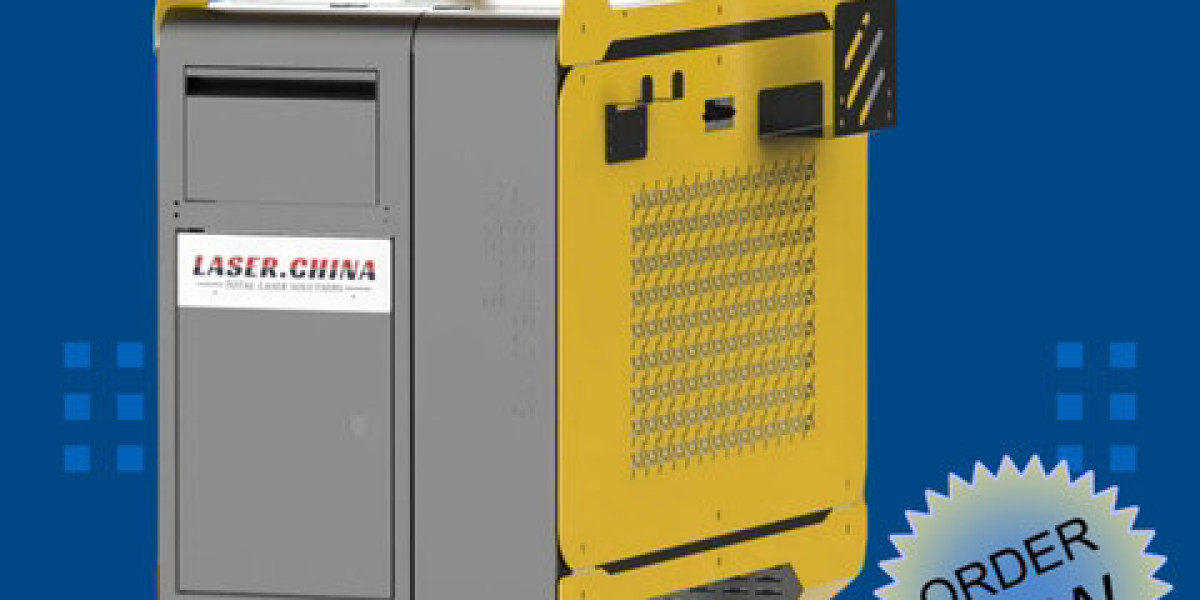Not a passing trend or a science fiction gimmick, this device is rapidly transforming how industries handle surface preparation. Whether it’s aerospace maintenance, automotive restoration, shipbuilding, or infrastructure upkeep, laser-based paint removal is earning a strong reputation for precision, speed, and cleanliness.
In this guide, we break down the role and real-world impact of a laser paint remover — focusing on how it works, who uses it, why industries are switching, and what makes it the practical choice for modern operations.
What Is a Laser Paint Remover and How Does It Work?
A laser paint remover utilizes highly concentrated beams of light to break the bond between paint and the surface it adheres to. This process is known as laser ablation. Instead of scraping or grinding the paint away, the laser heats and vaporizes the top coating layer by layer, all without damaging the underlying material.
The interaction happens in microseconds. The laser pulses strike the surface, absorbing into the paint and causing it to decompose into gas or dust. High-quality optics and sensors often come integrated to ensure the laser only targets the unwanted layers — leaving the base surface untouched and ready for further work.
No chemicals. No abrasion. No mess.
Who Uses Laser Paint Removers?
The user base is expanding across sectors, and each one finds specific value in this technology. Here's a closer look:
Aerospace maintenance crews use laser paint removers to strip coatings off aluminum fuselages without weakening the structure.
Automotive restoration experts apply them on vintage cars to remove old paint while preserving original steel or alloy surfaces.
Military operations utilize these tools for de-coating armored vehicles, minimizing environmental contamination and improving operational speed.
Marine industries deploy them on ship hulls, where corrosion beneath the paint must be revealed and treated with care.
Railway and infrastructure teams use them for graffiti removal, bridge maintenance, and tunnel repainting projects.
It’s not limited to industrial use either. Some advanced workshops and commercial maintenance services also integrate laser systems into daily use, especially where environmental restrictions make chemical or abrasive methods difficult to justify.
Why Laser Paint Removal Matters in Today’s World
The increasing push toward sustainable practices and workplace safety has created a need for better surface treatment technologies. Paint removal is a critical first step in many industries — and it's often the most hazardous. Lasers offer a direct response to these challenges.
1. Cleaner Workspaces
Unlike sanding or blasting, a laser paint remover doesn’t produce large volumes of dust, slurry, or chemical waste. The material vaporized by the laser can often be extracted using simple vacuum systems. This makes job sites cleaner, faster to manage, and safer for operators.
2. No Secondary Damage
Conventional removal tools can damage or weaken the base material. Sanding might dig into soft metal. Chemicals might stain or etch into surfaces. But lasers, when calibrated correctly, remove only the paint — leaving the material beneath intact.
3. Controlled and Precise
Because a laser beam is directed with exacting precision, it’s possible to remove paint from very small areas or complex geometries without masking. Think of painted bolts, detailed metalwork, or small mechanical components — all can be treated with pinpoint accuracy.
What Types of Paint Can It Remove?
One of the major concerns when using any paint removal method is compatibility. The good news is, a laser paint remover can handle a wide range of paint types, including:
Epoxy coatings
Powder coatings
Lead-based paints
Polyurethane
Enamel
Marine coatings
Whether the coating is thick or thin, applied in a single coat or in multiple layers, lasers can be programmed to work at different intensities. Operators can adjust the frequency and power of the laser pulse to match the material characteristics.
How Safe Is It?
A laser paint remover must be handled with care, just like any industrial equipment. But modern units are built with multiple safety layers:
Enclosures and beam shields to prevent accidental exposure
Interlock systems that shut off when accessed
Safety glasses or helmets to filter laser wavelengths
Remote-control systems to allow operation from a safe distance
Moreover, since there's no chemical involvement, the need for hazardous waste handling is dramatically reduced. There's no volatile organic compound (VOC) emission, no acid disposal, and no inhalation risk from airborne solvents.
How Long Does It Take to Remove Paint?
Laser paint removal isn’t instant — but it’s significantly faster than many assume, especially when factoring in total project time. Traditional paint removal might require hours of sanding, multiple chemical applications, and extensive cleanup. Lasers, on the other hand, can strip square meters of paint in a single pass, with minimal post-process.
The actual time depends on:
Coating thickness
Substrate material
Power output of the laser (ranging from 20W to over 1000W in industrial machines)
Type of laser system used (handheld, robotic, or automated)
In side-by-side comparisons, high-power laser systems consistently reduce total turnaround time — especially in repetitive or large-area jobs.
Is It Worth the Investment?
Many companies hesitate at the upfront cost of laser systems. It’s true that high-quality laser paint remover machines carry a higher price tag than sandblasters or chemical kits. But that doesn’t paint the full picture.
When calculating the cost, consider:
Elimination of consumables (no sand, chemicals, or pads)
Reduced labor due to faster cycles
No need for extensive cleanup or waste management
No repair or replacement of damaged base materials
Extended equipment life due to non-contact operation
Over time, the return on investment becomes significant — especially for high-volume operations.
What to Look for in a Laser Paint Remover
While this guide focuses on the application rather than specific models, here are key factors that matter when choosing one:
Laser power and type (fiber, CO₂, etc.)
Portability (handheld vs. robotic)
Cooling system (air or water-cooled)
Automation features
Safety certifications
After-sales support and training
Choosing the right tool depends on your material type, job frequency, and mobility needs.
Final Thoughts
The laser paint remover isn’t a futuristic promise — it’s a modern solution already changing how industries approach surface cleaning and paint stripping. From cleaner workspaces to precise application and reduced downtime, this technology offers a real and measurable edge over traditional techniques.
For industries that value safety, efficiency, and environmental responsibility, investing in a laser-based system isn’t just smart — it’s strategic. As regulatory standards grow stricter and margins grow thinner, companies can no longer afford outdated methods. Laser paint removal isn’t just viable — it’s vital.
Whether you're in aerospace, automotive, defense, or industrial maintenance, the switch to laser makes long-term sense. It's more than a tool — it's the future of paint removal.













